Teaching Nonverbal Autistic Children: Early Skills to Work On
- Autism-Talk

- Jul 15, 2024
- 11 min read
Table of Contents
Introduction
Completion Tasks
Matching Objects to Pictures
Matching Identical Objects
Matching Pictures
Imitating Simple Actions
Imitating Sounds
Pointing to Pictures of Sounds
Sorting and Matching Colors
Answering Yes/No Questions
Building a Strong Foundation
Many parents and educators feel lost when it comes to teaching a child who lacks the early learning skills typically associated with education, such as answering questions or completing simple puzzles. However, there are so many foundational skills that can be developed before a child exhibits these abilities. It's crucial to focus on these early skills, as they set the stage for more advanced learning, like reading and writing.
Every child has the potential to learn, but the skills targeted must be simplified and tailored to each child's abilities and interests. The following are some early learning skills that I have successfully used with autistic children.

One of the most difficult aspects of having a very young child with autism or a child with limited skills, including the ability to engage in play without some level of support, is that they spend too much time not engaged in any activity without the help of a parent or teacher. When children can play, it is much easier for them to occupy themselves independently and happily. Closed-ended tasks are a great way to begin working on play skills with young children with autism.

What It Is: Closed-ended tasks are any activities that have a clear and visually apparent beginning and end, such as putting a ball down a ball drop or placing rings on a ring stacker.
Why It’s Important: These activities develop motor skills, attention, and problem-solving abilities, which are essential for more complex tasks later.
How to Practice:
Basic Tasks: Start with simple activities like putting blocks in a bucket or stacking rings on a pole. These foundational tasks help your child develop coordination and fine motor skills.
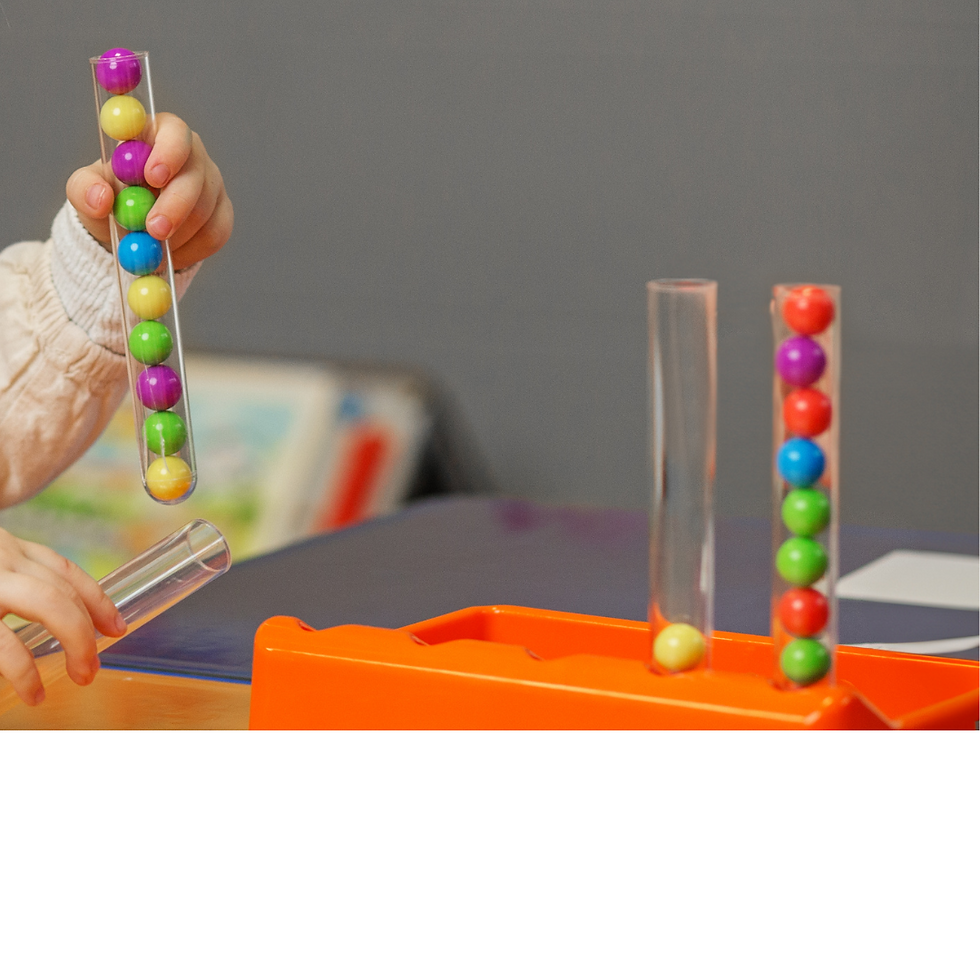
Increase Difficulty: As your child becomes more proficient, progress to more complex tasks such as using a shape sorter or stacking graduated rings. This encourages problem-solving and enhances their ability to focus on a task.
Examples:
Placing blocks in a bucket
Stacking plastic cups or taking apart
Stringing large beads onto a shoelace or taking off
Placing rings on a ring stacker- begin with a non-graduated ring stacker
Taking clothespins off the edge of a container and dropping them into the container
Dropping coins into a piggy bank
Scooping rice or beans into a container with a spoon
Putting straws into a hole in a container lid
Putting pom-poms into an ice cube tray
Putting balls into a tube or ramp
Putting pegs into a pegboard or taking off and putting in a container
Placing popsicle sticks into a slot in a container
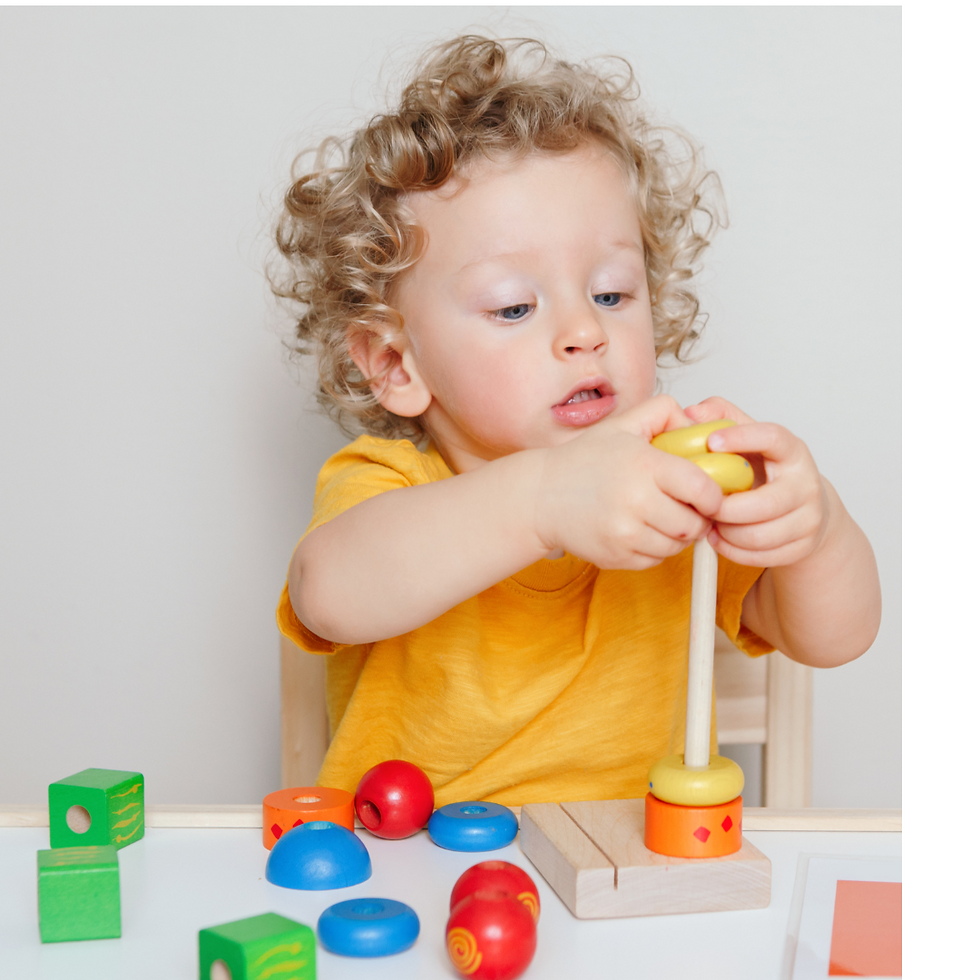
Children with autism are particularly drawn to completing things, such as placing the last puzzle piece or singing a word that is left out of a familiar song. This natural inclination can be used to guide children to develop skills in all areas of their life. These activities not only build essential motor and cognitive skills but also provide a sense of accomplishment for your child. For more detailed activities and tips, refer to this previous post.
Matching Objects to Pictures
What It Is: Teaching your child to match real objects with their corresponding pictures, starting with photo-realistic images and progressing to less realistic pictures and then line drawings.
Why It’s Important: This helps children understand that pictures can represent real objects, which is crucial for using pictures to communicate later on.
How to Practice:
Start Simple: Use real objects and matching realistic photos (e.g., match a toy car to a photo of a car).
Increase Complexity: Move to less realistic images and eventually line drawings.
Start simple with just one toy and one picture. If your child doesn’t quite understand it at first, you can help them by pointing or even guiding their hand. Gradually, as they get better, you can step back and let them do it on their own.
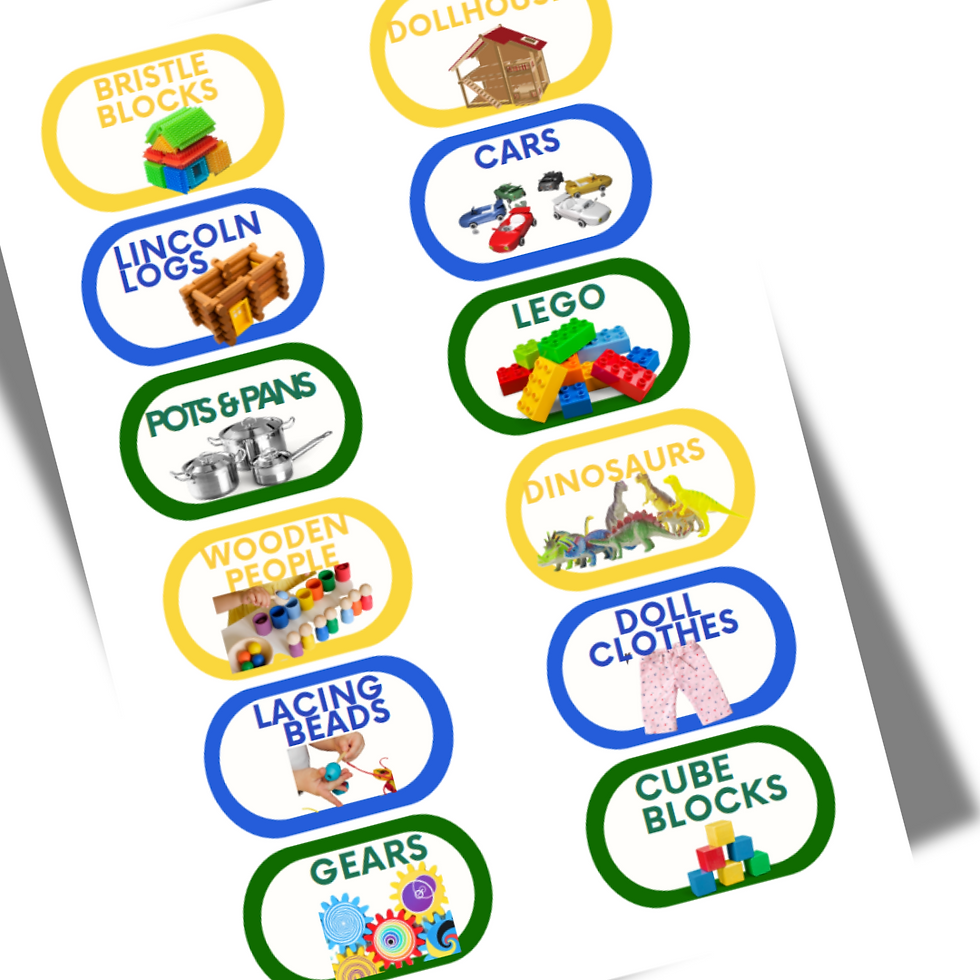
This approach helps them understand the concept of matching, which is a foundational skill for learning. For more information on similar activities, please see this previous blog post.
Examples:
If your child loves playing with matchbox cars or dinosaurs, you can make a fun game out of it by having them match the toy to a corresponding picture. I often use this as they are ready to put away the toy each time and make a game out of "parking the car in their special spot" or "putting the dinosaur to bed in his special spot with the matching picture."
Another fun idea is to put different objects in a bag and take turns pulling objects out of the bag and matching each pulled out object to a picture that matches. This activity adds an element of surprise that is fun for children but also incorporates the social skill of taking turns and waiting for a turn which is crucial to future skill development. It also is a great way to begin teaching children to play simple games.
Another option is to hide toys or objects in a sensory bin and have them find and match the items. Sensory bins can be filled with sand, rice, or pom poms. This not only helps your child learn to match objects to pictures but also builds their fine motor skills and increase tolerance to different sensory experiences. Making learning interactive and enjoyable can significantly enhance your child's engagement which is key to effective learning at any age.
Matching Identical Objects to Identical Objects
What It Is: Matching identical objects to each other.
Why It’s Important: This helps your child develop attention to detail and understand the concept of sameness, which is crucial for sorting and categorization.
How to Practice:
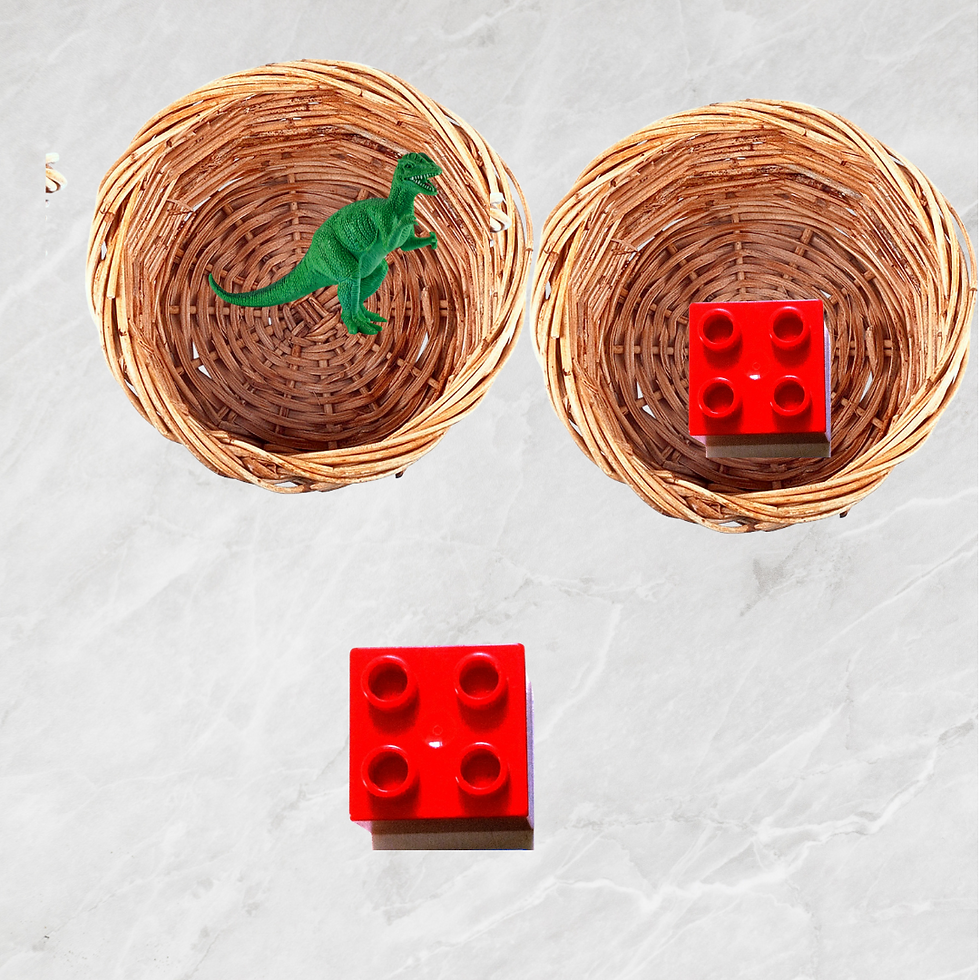
Object Matching: Start with two identical toys and have your child match them. For instance, give your child two identical toy cars and ask them to place the cars side by side. You can also use everyday items like two matching cups or two identical blocks.
Additional Fun Ideas:
Matching Game: Create a simple memory game with pairs of identical items. Place the items face down and have your child turn them over to find matching pairs.
Treasure Hunt: Hide identical objects around the room and have your child find and match them.
Real-Life Items: Use household items like pairs of socks or shoes and have your child match them.
These activities build keen observation skills and teach your child to recognize and pair identical objects, providing a solid foundation for later sorting and categorization skills.

Matching Pictures to Identical Pictures
What It Is: Matching a picture to another picture that is exactly the same.
Why It’s Important: This helps your child understand that pictures can represent real objects, which is crucial for using pictures to communicate and categorize later.
How to Practice:
Picture Matching: Use pairs of identical pictures and encourage your child to find and match them. Start with two identical photos of the same car or animal and ask your child to place them side by side. Gradually increase complexity by using images from books or printed pictures of familiar objects.

Additional Fun Ideas:
Memory Match Game: Create a memory game with pairs of identical picture cards. Place the cards face down and have your child flip them over to find matching pairs.
Photo Album: Create a photo album with pairs of identical images and have your child match the pictures as they flip through the album.
Matching Worksheet: Put stickers on one side of the page and identical stickers on the other side and have your child draw lines between the matching stickers.
Sticker Match: Put stickers on a piece of paper and hand child one sticker at a time that match and have them place the sticker next to its match or on top of it. If you have a child that has a specific interest, you can buy stickers that will interest them such as trains or dinosaurs.
These activities help your child recognize and match identical pictures, which is a foundational skill for later tasks like sorting, categorizing, and using visual aids for communication.
Imitating Simple Actions
What It Is: Encouraging your child to imitate simple actions, play sounds, and environmental sounds.
Why It’s Important: Imitation skills are crucial for later speech development as they help children learn to mimic sounds and actions, a precursor to verbal communication.
How to Practice:
Perform simple actions like clapping or waving and encourage your child to copy you. You can also include simple songs that the child likes and encourage them to imitate the motor actions of the song.
Examples: Songs and Corresponding Actions for Imitation
“Itsy Bitsy Spider”
Actions: Climb fingers up a pretend spider web, then bring hands together for the rain. “Twinkle, Twinkle, Little Star”
Actions: Open and close hands to mimic twinkling stars, make a star shape with hands.
“Head, Shoulders, Knees, and Toes”
Actions: Touch each body part as it is mentioned in the song.
“Wheels on the Bus”
Actions: Move hands in a circular motion for wheels, open and close hands for doors.
“Old MacDonald Had a Farm”
Actions: Mimic animal sounds and movements (e.g., flap arms like a chicken, wiggle fingers for a duck).
“If You’re Happy and You Know It”
Actions: Clap hands, stomp feet, shout hooray.
“Row, Row, Row Your Boat”
Actions: Pretend to row a boat by moving hands back and forth.
“Five Little Ducks”
Actions: Hold up fingers to count the ducks, make duck quacking motions.
“Ring Around the Rosie”
Actions: Hold hands and spin in a circle, then fall down gently.
“Bingo”
Actions: Clap hands for each letter in “B-I-N-G-O.”
“Five Little Monkeys Jumping on the Bed”
Actions: Jump up and down gently, then pretend to fall down.
“Five Little Speckled Frogs”
Actions: Pretend to sit on a log and jump off like frogs.
“Pat-a-Cake”
Actions: Clap hands together, roll them, and pat them.
“I’m a Little Teapot”
Actions: Form a handle and spout with arms, then tip.
“Baby Bumblebee”
Actions: Catch bee, pretend to get stung, wipe off hands, sign all done.
These songs and actions are engaging ways for children to develop their imitation skills and enjoy playful learning. Feel free to mix and match these activities to keep your child interested and motivated!
Imitating Sounds
What It Is: Encouraging your child to imitate sounds from their environment, toys, or objects
Why It’s Important: Imitating sounds helps build auditory discrimination, enhances speech development, and supports early communication skills.

Examples:
Toy Car - Vroom Sound
Play with a toy car and make a "vroom" or "beep beep" sound. Encourage your child to imitate the sound as they push the car.
Toy Animals - Animal Sounds
Use toy animals and make their corresponding sounds (e.g., "moo" for a cow, "quack" for a duck). Have your child imitate these sounds as they play with the animals.
Baby Doll - Crying or Sneeze Sounds
Pretend to play with a baby doll and make crying or hiccupping sounds. Invite your child to mimic these sounds.
Tea Party - Pouring and Sipping Sounds
Action: During a pretend tea party, make pouring and sipping sounds (e.g., “glug glug” for pouring, “sip sip” for drinking). Have your child imitate these sounds.
Vacuum Cleaner - Humming Sound
Turn on a toy vacuum cleaner and make a humming sound. Ask your child to copy the vacuum sound as they play with the toy.
Fire Engine - Siren Sound
Use a toy fire engine and make a siren sound (e.g., “woo-woo-woo”). Encourage your child to make the same sound.
Telephone - Ringing Sound
Pretend to use a toy telephone and make a ringing sound. Invite your child to mimic the telephone ring.
Train - Choo-Choo Sound
Play with a toy train and make a “choo-choo” sound. Have your child imitate this sound as they play with the train.
Drum - Beat Patterns
Use a toy drum to create simple beat patterns (e.g., “boom boom clap”). Encourage your child to replicate the patterns.
Clock - Ticking Sound
Pretend to be a clock and make a ticking sound (e.g., “tick-tock”). Encourage your child to make the same sound.
Boat - Toot Toot boat sound
Play with a toy boat and make a tooting sound
Telephone - Ringing and Talking
Pretend to answer a telephone and make ringing and talking sounds. Encourage your child to imitate both the ringing and the talking.
Airplane - Whooshing Sound
Play with a toy airplane and make a whooshing sound (e.g., “whoosh”). Have your child imitate this sound.
These activities make sound imitation engaging and interactive, helping children develop their listening and vocal skills in a fun way. Mix and match these ideas to keep your child entertained and learning!
Pointing to Pictures of Environmental Sounds
What It Is: Teaching your child to recognize and point to pictures that correspond to environmental sounds they hear.
Why It’s Important: This skill helps children connect sounds with their sources, aiding in their understanding of the world around them and building listening and attention skills and helping them begin to discriminate different sounds.
How to Practice:
Play a sound, like a toilet flushing or a dog barking, and have your child point to a picture of a toilet or dog when they are presented with 3 or 4 cards. You can begin with only one card that has the picture you want the child to point to if they are having difficulty or use a positional prompt where you put the card of the correct sound closer to them. Practicing this can be done in a game format where you each take turns identifying a sound and finding the correct cards with that picture.
As you read books you can make the sound of objects or animals in the pictures and see if your child can point to what would make that sound.
Throughout the day or as you take a walk pointing out different sounds you hear and discuss what they think is making the sound.
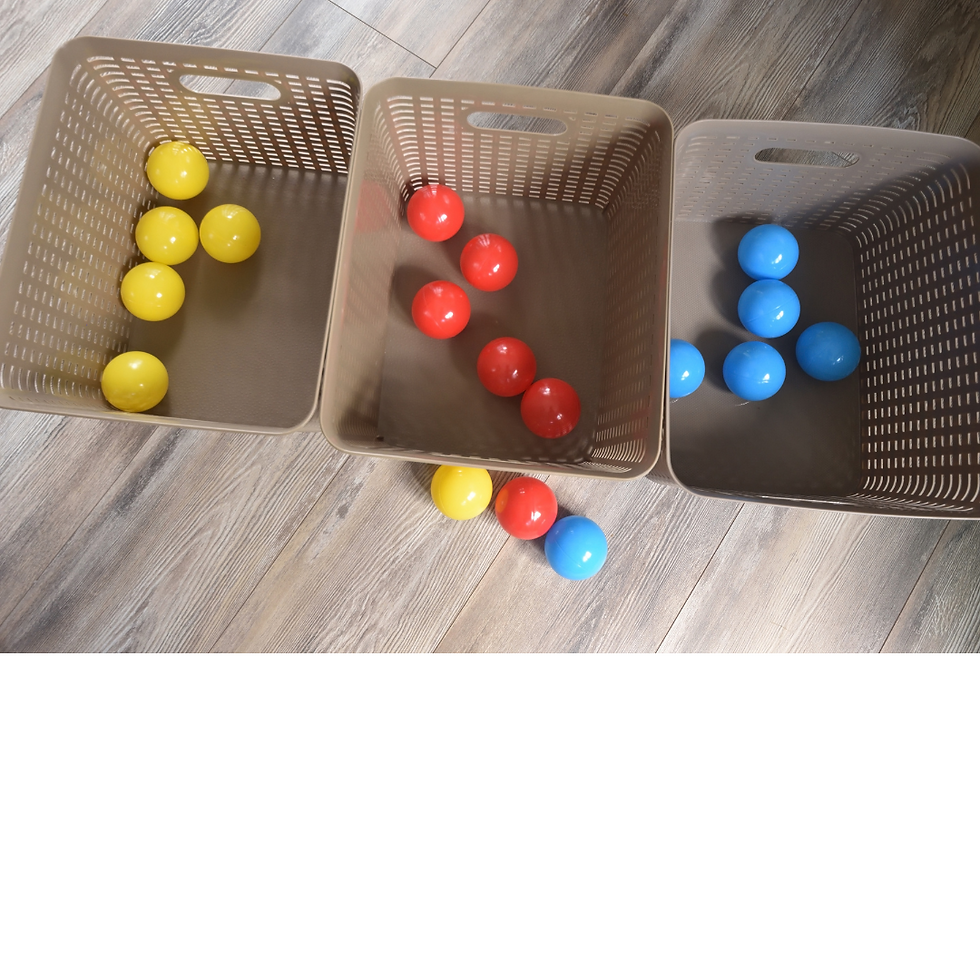
Sorting and Matching Colors
What It Is: Teaching your child to sort and match objects by colors such as a blue ball to a blue ball and then moving to sorting 2 colors, such as sorting black and red checkers in to 2 different containers. and gradually sorting 3 then 4 or 5 different colors.
Why It’s Important: Sorting and matching colors build categorization skills and help your child understand concepts of similarity and difference.
How to Practice:
Sorting: Provide various colored objects (begin with 2 colors and gradually increase to more colors and have your child play in the sensory bin and as they find objects either place them in 2 separate containers or place them on a cards or piece of paper of that color.
Matching: Use objects or cards of the same color and encourage your child to match them.
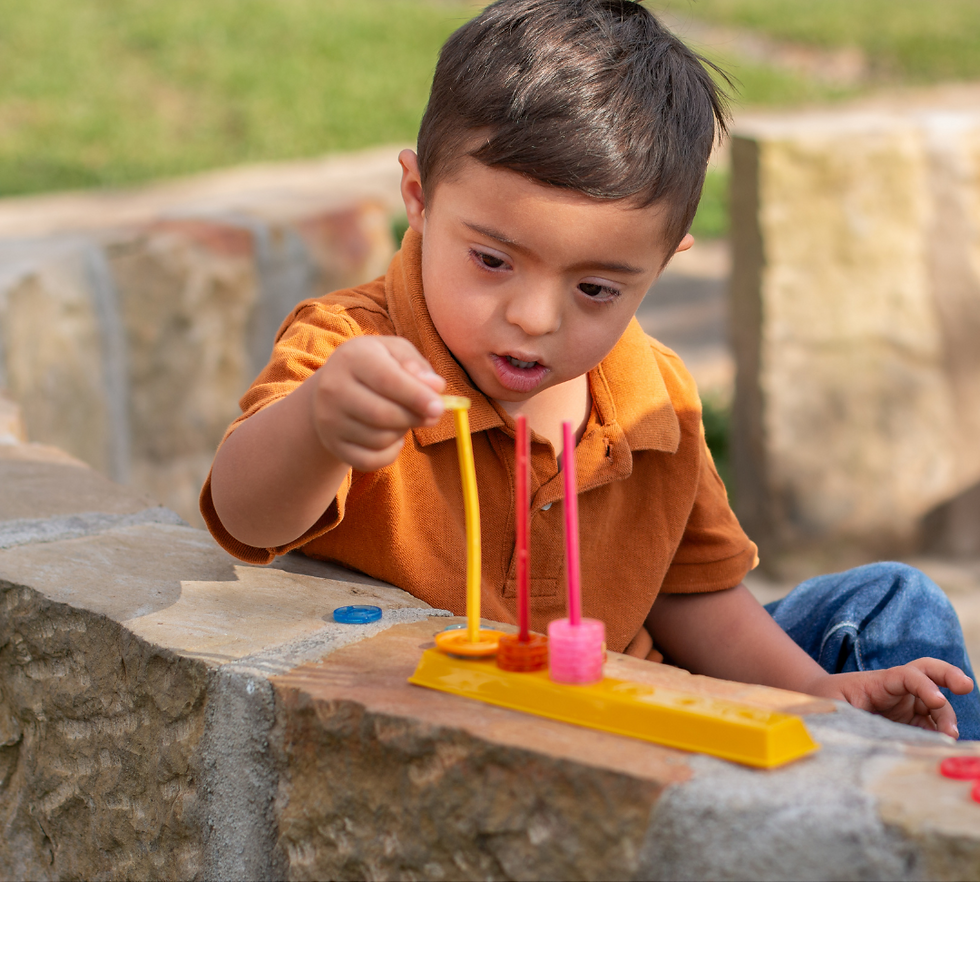
Example: Give your child red and blue blocks and ask them to sort the blocks by color. Then, provide a red card and ask them to match it with a red block.
Answering Yes/No Questions
What It Is: Teaching your child to respond to yes/no questions about the identity of objects.
Why It’s Important: This skill helps develop basic communication and understanding, paving the way for more complex questions later.
How to Practice:
Identity Questions: Show your child an object and ask, “Is this an apple?” Encourage them to answer yes or no. You can start by modeling the answers yourself and then gradually let your child respond. If they have difficulty, give them alternative ways to answer, such as nodding or shaking their head, or pointing to pictures labeled "yes" and "no."
Reinforce Understanding: Use a variety of objects and consistently ask identity questions. Make it a fun and silly game to keep your child engaged. For example, hold up a toy apple and ask, “Is this a whale?” This not only makes the learning process enjoyable but also helps reinforce the concept of yes and no.
Example: Hold up a toy apple and ask, “Is this a car?” prompting your child to answer no. Then, switch it up with other objects and questions, like holding up a stuffed bear and asking, “Is this a banana?” The goal is to keep it light-hearted and fun while teaching an essential communication skill.
Important Note: It can be tempting to ask higher-level questions like, “Is this red?” or “Does this fly?” However, make sure your child is able to answer simple identity yes/no questions first. Ensure they understand and can use gestures like shaking or nodding their head and recognize these gestures when used toward them. Sometimes children with autism, even those with higher-level skills, may have difficulty understanding and using gestures.
Building a Strong Foundation for Communication and Learning
By focusing on these early learner skills, you’re helping your child build a solid foundation for future communication and academic skills. Each of these activities supports your child’s development in a practical, engaging way. Remember, the goal is to create opportunities for learning that are enjoyable and tailored to your child’s unique needs.
If you need additional guidance or support, consider consulting with your child’s therapist or educator. Together, you can develop strategies that best support your child’s growth and development.
%20(21).png)










Comments